Napa Valley Sauvignon Blanc, wines that add value, tight vineyard management and that picture-perfect climate, these are a few of Jones’s favourite things…
With most of the wine trade still on holiday in August our contributing editor Michelin star chef Roger Jones was sent on a ‘study’ trip to the Napa Valley. In and out of the Napa Valley in less than five days, tasting from over 60 wineries, meeting over 120 winemakers, owners, key Napa decision makers, getting down and dirty in the vineyards, introduced to some fascinating global wine characters but he still did not have quite enough time to meet all his fellow travellers on the trip.

So here are the 10 key learnings from my first trip to Napa:
1. Size is not everything
Napa Valley represents 0.4% of the world’s wine production, and only 4% of California’s wine grape production. However, there is no question that the region has a worldwide reputation for top class wines.
2. Climate is pretty perfect
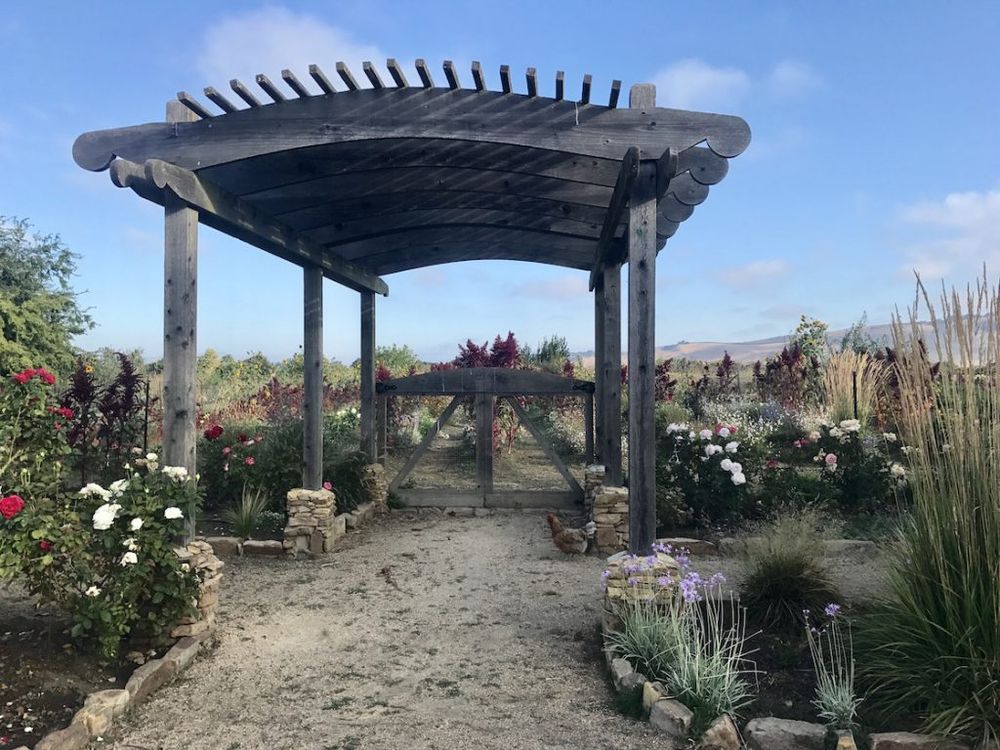
The Mediterranean climate (this specific climate currently only covers 2% of the Earth’s surface) with hot summer days and cool summer nights is an ideal environment, added to this the morning fog helps to not only keep the temperature of the grapes down but also gives moisture to the air.
3. The AVAs
The buzzword (American Viticultural Area) and there are 16 AVAs within the Napa Valley AVA. It is also important to understand the varied topography where vineyards range from sea level to 2,600 feet. Then there are the diverse soils, with 50% of the world’s recognised soil orders. This is before we discuss the winemaker’s involvement in the Vineyards and cellar (if any).
4. Sustainability and organic farming
This was a key point and regularly outlined, and whether wineries were fully Organic Certified or not, it was clearly outlined that many nevertheless had followed organic practices for many years but may not be officially certified. There are many other practices encouraged by the Napa Valley Vintners with over 50% of members in the Napa Green environmental sustainability programme.
5. Family
475 wineries in Napa, with 95% family owned, with 80% of wineries producing fewer than 10,000 cases. It was clear that this was a community run by a close-knit family partnership. There are, of course, many other regions across the globe where friendship and wineries go hand in hand, but in an environment where many of the wines are high profile it is rare to see such comradeship, this especially relates to the environment and new advanced vine management.
6. Value added wines
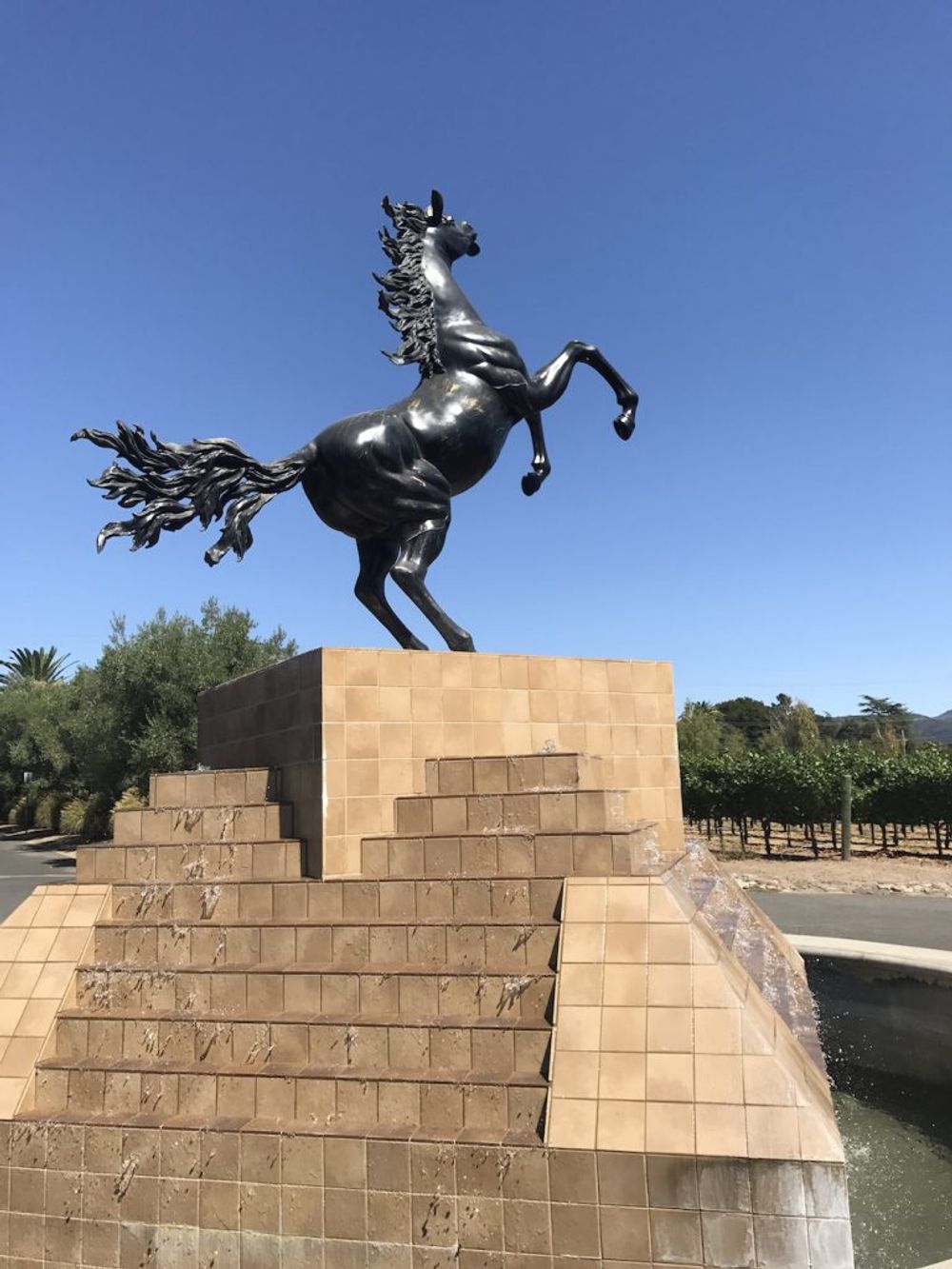
Of course to most people Napa means dollars, and lots of them, however it became very clear that there are a good proportion of high quality wines being produced at a more modest price, especially suitable for the on-trade in the UK. These include; Raymond Vineyards, Trefethen Family Vineyards, Honig Vineyard, Black Stallion Estate, Grgich.
7.Vineyard management
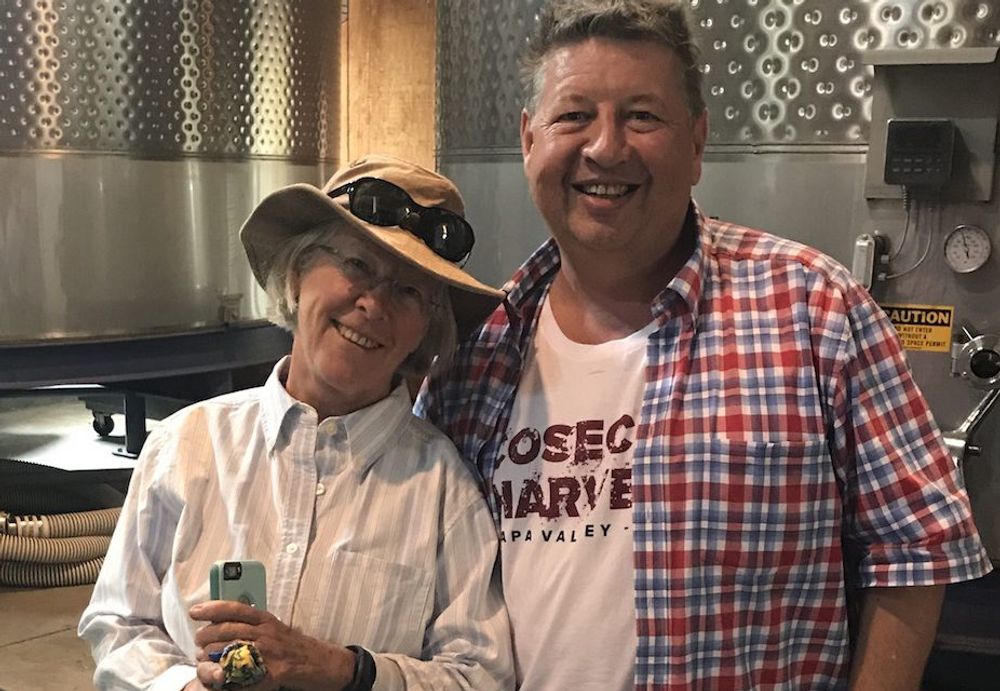
Here we saw different styles at work with some winemakers content with the higher alcohol that they were producing in their premium wines whilst others and especially in the more moderate prices sought to control the alcohol by vineyard management especially with canopy management and the site of plantings moving from vertical to horizontal to search for less power.
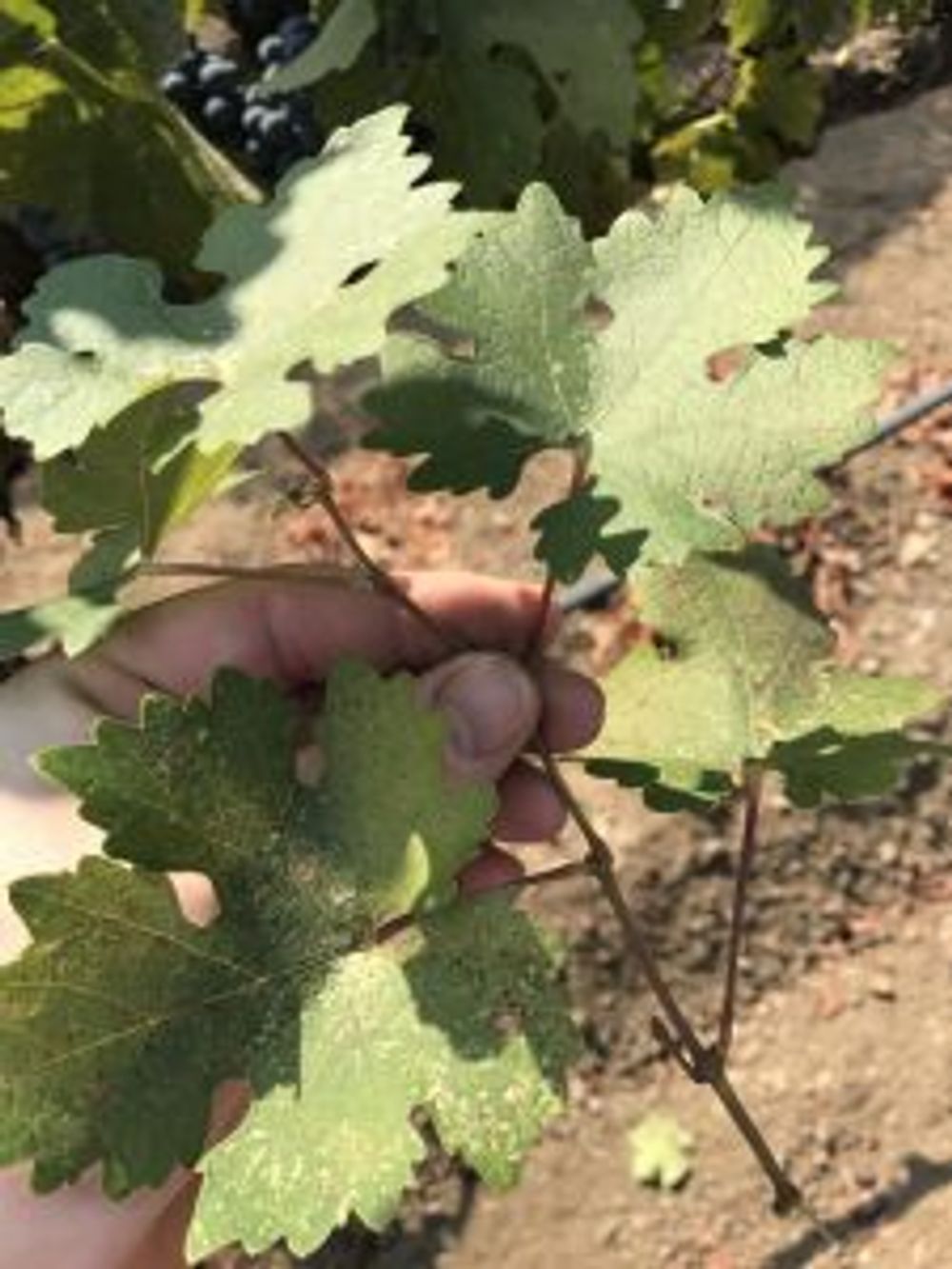
I spent a wonderful morning with Cathy Corison going through her canopy stripping out the laterals, which not only allowed more sunshine on the mature grapes but eased the stress on the vines. Corison has from the outset defied the norm and been a champion of restraint, and is happily encouraging others now to follow suit.
8. Cabernet is still king of the Napa
Despite enjoying some great wines it was pretty clear that Cabernet still rules, with nearly 50% of the vines being Cabernet. It was also good to see the different styles of Cabernet, especially highlighted by site specific areas and the unique Napa Valley terroir, from Stags Leap, Mount Veeder, Oakville, Coombsville to Rutherford.
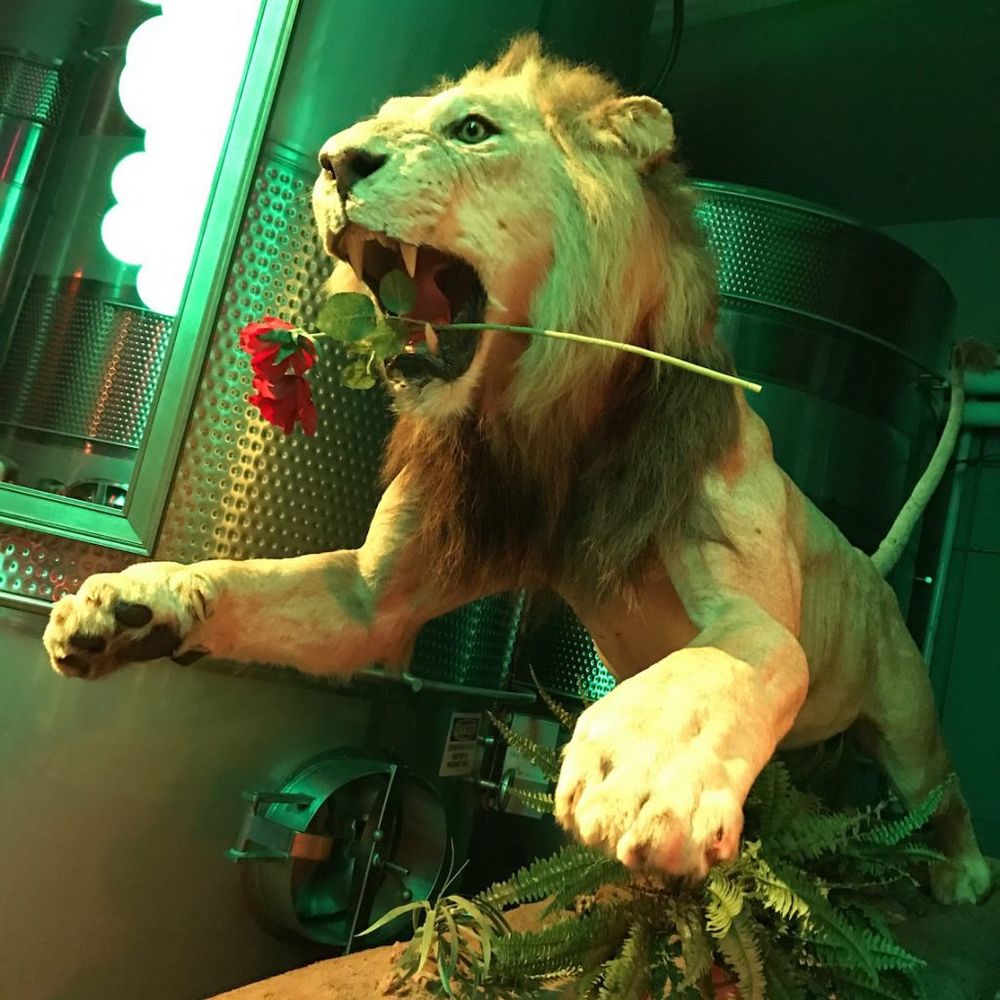
9. The Wine Bible – Karen MacNeil
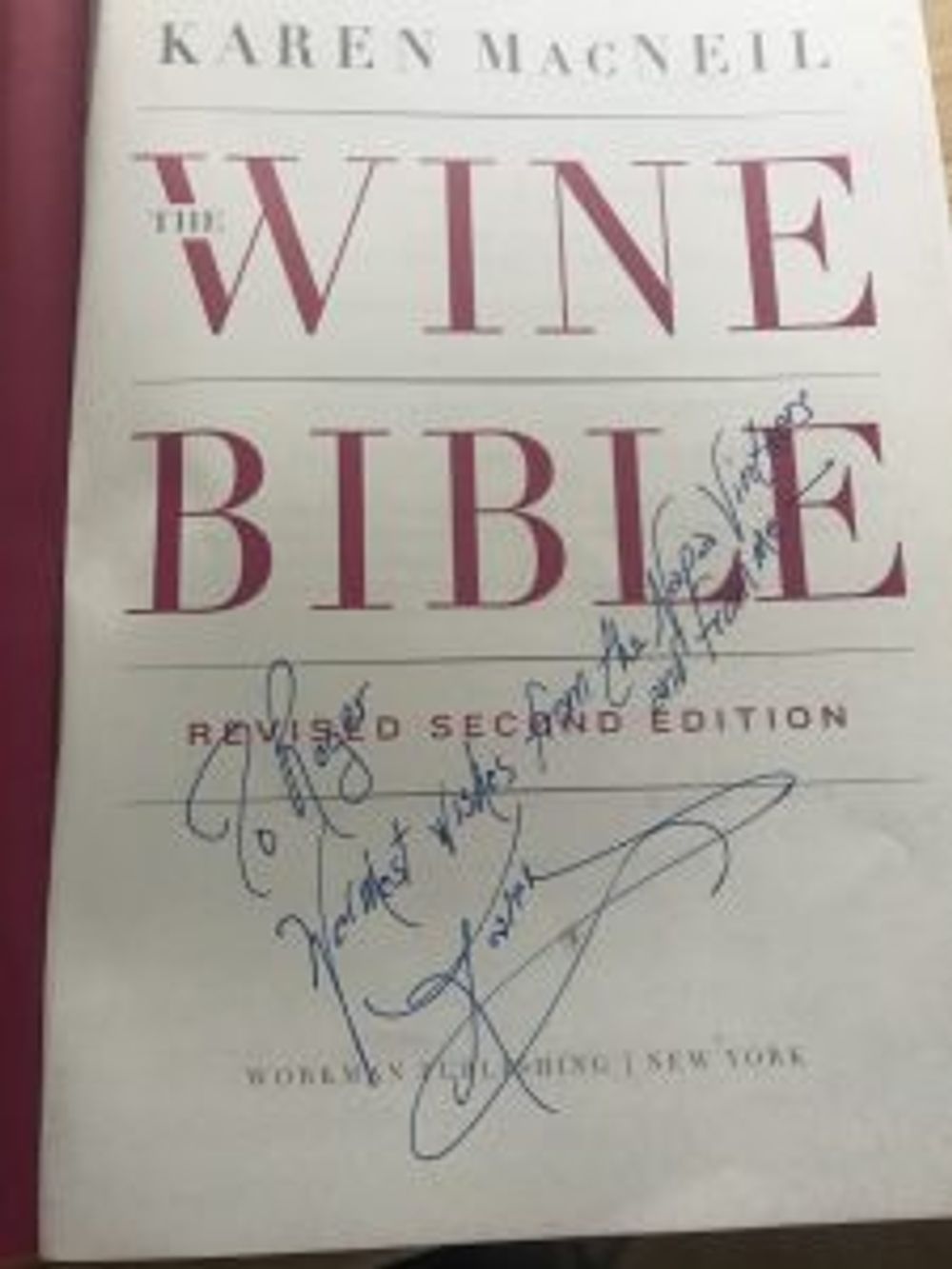
It was a pleasure to meet up with Karen MacNeil, author of The Wine Bible (half a million copies sold) who is somewhat a superstar in the USA. MacNeil is coming to the UK this month to host a seminar at the California Wine Fair annual tasting, she is a fascinating lady full of wine knowledge who can liven up even the most boring educational fact into a lively discussion.
10. Napa revolution of Sauvignon Blanc
There was certainly a determined influence to get us to try Sauvignon Blanc, and pretty exciting they were too, more ‘wild mountain pine needles’ than ‘grassy’. Textured and more in the style of white Bordeaux.
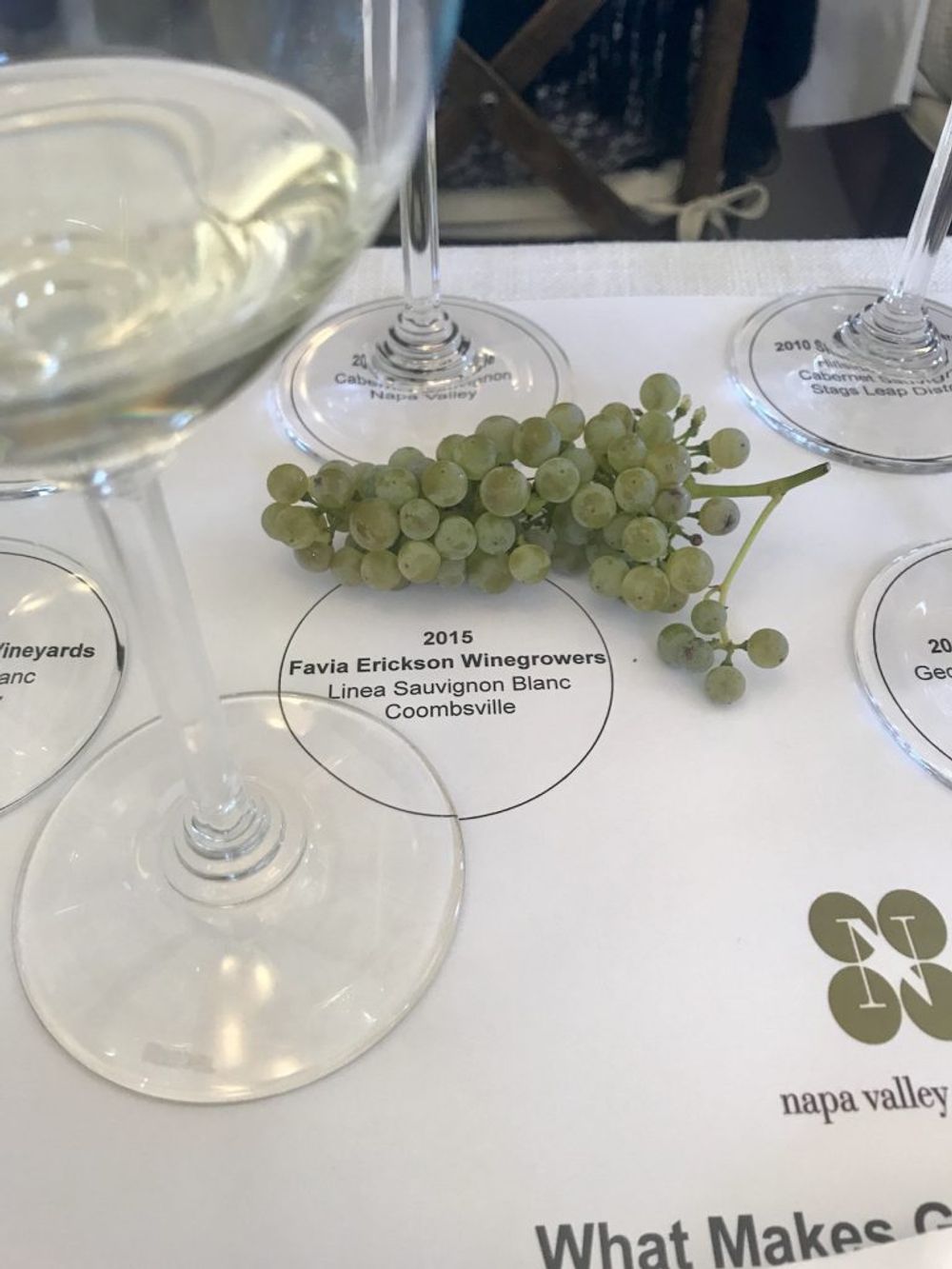
OK with that in mind, here are some tasting notes on Sauvignon Blanc
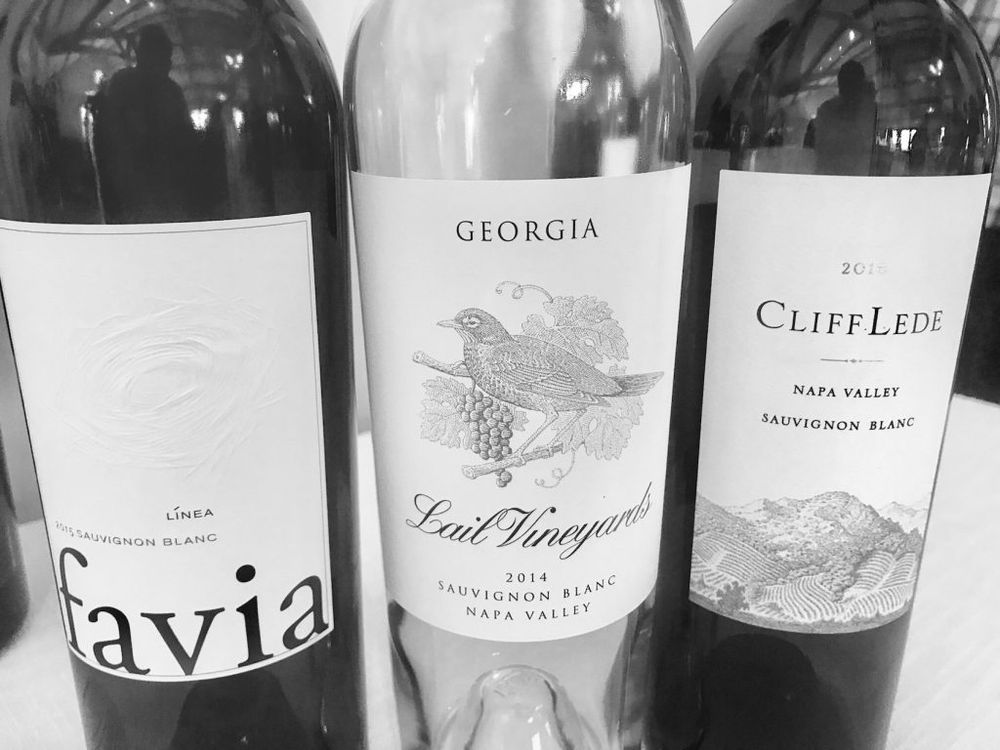
Grgich Hills Estate Sauvignon Blanc 2014
Ivo Jeramaz, vice president of vineyards and production, suggested that this wine was in the Sancerre style, it certainly had fruit, minerality and floral attributes, it had great freshness, and was a very pleasant wine.
Cliff Lede Vineyards Sauvignon Blanc, Napa Valley 2016
This has a few other ingredients; 14% Semillón, 3% Sauvignon Vert and 1% Muscat Canelli, lovely precision to the wine giving concise flavours of lemon curd, crème brulee, honey, spices and wild forest herbs.
Favia Erickson Winegrowers Linea Sauvignon Blanc, Coombsville 2015
80% Sauvignon Blanc, 20% Sauvignon Musque. Distinctive and superlative. It is fresh and exciting from the citrus flavours; yuzu, lemon grass, lime zest but has layers of amazing fruit: peaches, pineapple, hibiscus and wet mountain river stones.
Laid Vineyards Sauvignon Blanc Georgia 2014
Only 320 cases made, which is reflected in the price; $150 retail in USA. A wine based on the great Haut-Brion Blanc, aged in new oak, beautiful structured wine, stone, pink grapefruit, melon, white flowers, sensational mouth feel, a rare and wonderful wine.
Inglenook Sauvignon Blanc, Rutherford 2015
Bright clean citrus aromas, white peaches, delicate floral nuances, pears and pineapple, some tropical notes too. Some lovely acidity to balance it all.
St Supery Estate Sauvignon Blanc, Napa Valley 2016
Well balanced clean focused refreshing wine, soft passion fruit on nose then a clean lime zest and pink grapefruit & melon palate.









































